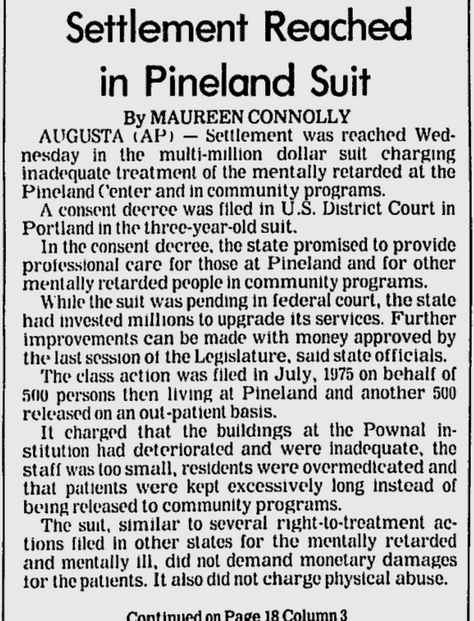In 1978, the state decided to settle the lawsuit, rather than go to trial. The result was a two-part consent decree that detailed rights of persons with developmental disabilities at Pineland and in the community. The right to live in the least restrictive and most normal conditions possible was a primary right.

The consent decree was unique in its inclusion of community standards. Both parts of the decree – in great detail – specify residents’ rights in areas including, physical environment food, staffing ratios, education, recreation and various therapies.
It set deadlines for compliance. The state and communities had to create non-institutional housing, support services, education, and programming – and improve facilities, programming, and services at Pineland.
In 2010, the court released the state from oversight, deeming it in compliance. Many involved in the case and in providing services to persons with developmental disabilities have said the state never fully complied and still has not.

